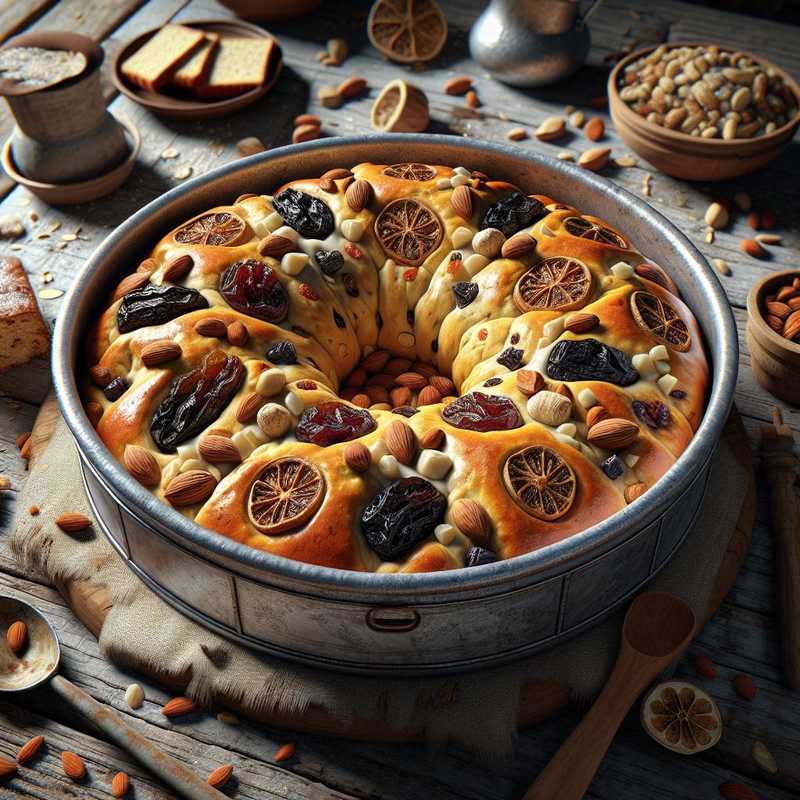Trentino Zelten
17/11/2023The Trentino Zelten is a traditional Christmas cake from Trentino-South Tyrol, a sweet bread enriched with dried fruit and spices. Here is the recipe:
Ingredients
- 500 g of flour
- 25 g of fresh brewer’s yeast
- 60 g of sugar
- 200 ml of lukewarm milk
- 100 g of melted butter
- 2 eggs
- 1 pinch of salt
- Grated zest of 1 lemon
- 1 teaspoon of powdered cinnamon
- 1 pinch of grated nutmeg
- 100 g of roughly chopped walnuts
- 100 g of roughly chopped hazelnuts
- 100 g of pine nuts
- 100 g of raisins, previously soaked in warm water
- 100 g of chopped dried figs
- 50 g of candied fruits
- Rum or grappa to flavor the dried fruit (optional)
Preparation
- Dissolve the brewer’s yeast in the lukewarm milk with a teaspoon of sugar.
- In a large bowl, pour the sifted flour and form a well in the center. Add the melted butter, sugar, eggs, grated lemon zest, a pinch of salt, cinnamon, nutmeg, and the milk with the dissolved yeast into the well. Start kneading until you get a soft and homogeneous dough.
- Fold the dried fruits into the dough: walnuts, hazelnuts, pine nuts, raisins (squeezed and dried), chopped dried figs, and candied fruits. If you wish, you can macerate the dried fruits in rum or grappa before adding them to the dough.
- Knead the dough until the fruit is evenly distributed, then form a ball and let it rise in a warm place covered with a clean towel for about 2 hours, or until it doubles in volume.
- Take the risen dough and shape it into an elongated or round loaf, then lay it on a baking sheet lined with parchment paper.
- Preheat the oven to 180 °C and bake the Zelten for about 40-50 minutes, or until it turns golden brown and has a crispy crust.
- Allow the cake to cool completely before serving.
The Zelten can be decorated with whole dried fruits or glazed with powdered sugar before baking for a more festive effect. It also keeps for several weeks, becoming increasingly flavorful, thanks to the spices and dried fruit it contains.
Curiosity
The Trentino Zelten is a cake mainly prepared during the Christmas period, and its name probably comes from the German “selten”, meaning “rarely”, perhaps indicating that this cake was once prepared only for special occasions.
